| What they'll
find is a huge gap between countries with a head start, and those still
in the blocks. Not surprising, the countries with the most energy-efficient
economies are those who import their energy supplies.
Japan leads the way. It is, after all, birthplace of the Kyoto Protocols for climate change. More important, Japan has very little domestic energy production and is forced to import most of its fuel supply--creating a powerful economic incentive to use those expensive imports efficiently. (See "Japan's Green Gold Mine.") The island nation uses 4,500 BTUs per U.S. dollar of gross domestic product, a measure known as "energy intensity," the world standard for measuring how efficient an economy is at using energy. A country with a very high GDP and relatively little energy consumed is likely to be a very energy-efficient economy. Conversely a country with huge energy consumption and relatively little GDP is unlikely to be efficient. A BTU, or British thermal unit, is the amount of heat energy needed to raise the temperature of one pound of water by one degree Fahrenheit. Of course, the use of energy intensity as a measure is not perfect and the results can be misleading. By the EIA's data, the country with the lowest energy intensity is Chad. True, Chad uses little energy, but the country is largely reliant on low-tech subsistence farming. Comparing it with the U.S. makes little sense. So for our list we looked at only the 75 largest countries in terms of total GDP. Not surprisingly, the countries are wealthy and among the world's greenest as well, according to the Environmental Performance Index, a joint product of Columbia University and Yale University, which measures performance against 25 indicators, such as measures of air pollution, water supply or use of natural resources. Switzerland, which ranks third for efficiency, is ranked as the greenest country. Austria is not far behind at sixth, with Germany and the U.K. also in the top 15. The most energy-efficient countries are all similar to Japan. In many cases, they do not have access to abundant sources of energy and have sought efficiency as a matter of energy independence--in the case of (No. 2) Denmark as an urgent national priority since the oil shocks of the 1970s. Hong Kong, Ireland, Israel and Italy all make the list as well. The U.S. doesn't. Using energy intensity as a measure, the U.S. is using slightly more than 9,000 BTUs per dollar of GDP. The top 10 countries use 7,500 BTUs or less. China uses 35,000 BTUs per dollar of GDP. (See "China's Power Problem.") They're far from the worst, though. At the other end of the scale are former Soviet countries: Russia, Kazakhstan, Uzbekistan and Ukraine. Ukraine uses 138,000 BTUs of energy for every dollar of GDP--roughly 30 times the level of consumption in Japan. The aging energy infrastructure of these countries, a remnant from the not-so-efficient days of Soviet planning, has much room for improvement. A note on sources: Different agencies give different estimates of energy consumption and GDP. For the purposes of our ranking, we looked at data released in October from the Energy Information Administration of the U.S. Department of Energy. The estimates of total primary energy consumption are those of the EIA. For GDP figures, the EIA used data from Global Insight. The October 2007 data is for the year 2005. In Pictures: The 10 Most Energy-Efficient Countries No. 1: Japan 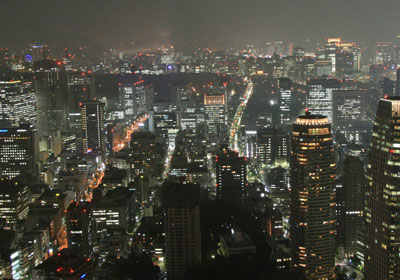 Consumption: 22.6 quadrillion BTUs The islands of Japan have nowhere near the energy Japan needs. In order for the giant Japanese economy to keep growing, without being throttled by its energy imports, the Japanese have turned to energy efficiency to keep down the fuel bills, and also to control its carbon dioxide emissions. No. 2: Denmark 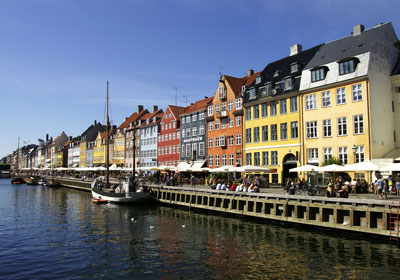 Consumption: .83 quadrillion BTUs Denmark sits low on the list, thanks to longstanding and aggressive government efforts (including a high energy tax) to reduce dependence on foreign fossil fuels, dating all the way back to the oil crisis of 1973. No. 3: Switzerland 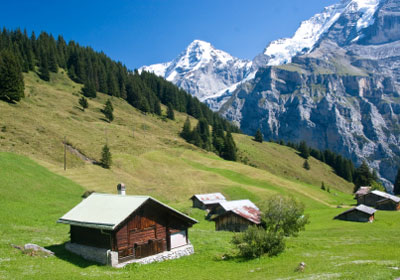 Consumption: 1.27 quadrillion BTUs One initiative in Switzerland that has contributed to improvements in energy efficiency has been designating towns as "energiestadts" or energy towns. Local governments working to earn the label, as well as other government and private initiatives, combined to allow Switzerland to achieve a 29% increase in energy efficiency in 2004 alone, according to an OECD Environmental Performance Review. That's part of the reason why the 2008 Environmental Performance Index produced by Columbia and Yale University ranked Switzerland as the world's greenest country. |
No. 4: Hong Kong
 1.04 quadrillion BTUs One advantage of having as little land as Hong Kong: There's simply not as much space to build high-intensity factories. Though a special administrative region of China, Hong Kong's energy consumption is still tracked independently by the Energy Information Administration. Its doing a lot better than China, too. China uses 35,000 BTUs per dollar of GDP--more than seven times as much energy as Hong Kong. No. 5: Ireland  Consumption: 0.66 quadrillion BTUs A 2007 report from Sustainable Energy Ireland, the name of Ireland's national energy agency, found that Ireland's energy-efficiency scores were so high in part because of structural changes in its industries. Ireland's industrial policy focused on increasing the manufacture of pharmaceuticals and electronics. One benefit of the policy: These are low-energy-intensity industries. No. 6: United Kingdom  Consumption: 10 quadrillion BTUs Despite being the E.U.'s largest producer of oil and natural gas, the U.K. cannot produce enough to power its economy. The U.K. is now a net importer of natural gas and will soon be a net importer of oil as well--and to meet this challenge, the country is pursuing more efficiency. No. 7: Israel 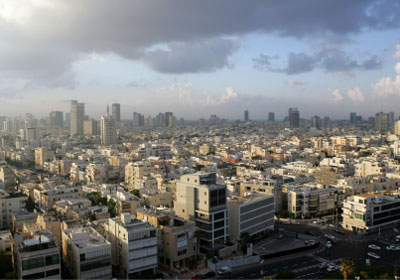 Consumption: 0.85 quadrillion BTUs The Middle East and North Africa comprise one of the worst regions for energy efficiency. Abundant natural resources have left much of the region with little incentive to focus on efficiency. But not Israel. A lack of supplies and a desire for a post-industrial economy have resulted in Israel being much more efficient than its neighbors. No. 8: Italy  Consumption: 8.08 quadrillion BTUs Like many energy-efficient countries, Italy has few domestic resources. What's more, the country has been unable to install enough electricity to keep up with demand, forcing the country to import expensive electricity. Since 1991, however, Italy National Energy Plan has had a focus on energy efficiency. No. 9: Germany  Consumption: 14.5 quadrillion BTUs Germany has large reserves of coal, allowing it to create more of its power than many of its neighbors. Attribute it to simple German efficiency, perhaps, that the country has delved head first into improving its infrastructure and developing renewable energy sources. Though scoring slightly poorer marks for efficiency than England to the west, Denmark to the north and Italy to the south, Germany leads in other categories: For example, it is the world's largest generator of wind energy. No. 10: Austria 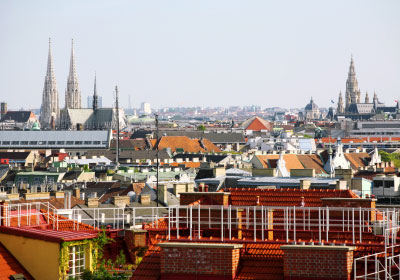 Consumption: 1.54 quadrillion BTUs Austria, too, has more energy-efficient neighbors. But while Germany has a green advantage with wind power, Austria's advantage is hydroelectricity. Nearly half the country's electricity comes from hydroelectric plants. According to the Environmental Performance Index, Austria is the world's sixth greenest country. Only Switzerland is both greener and more efficient. |